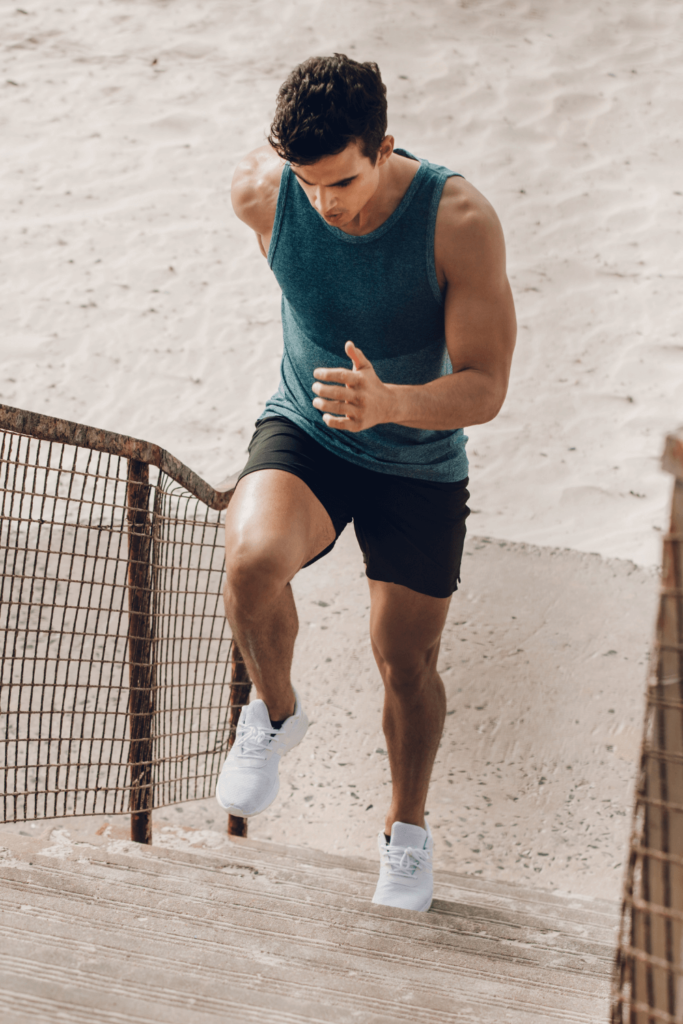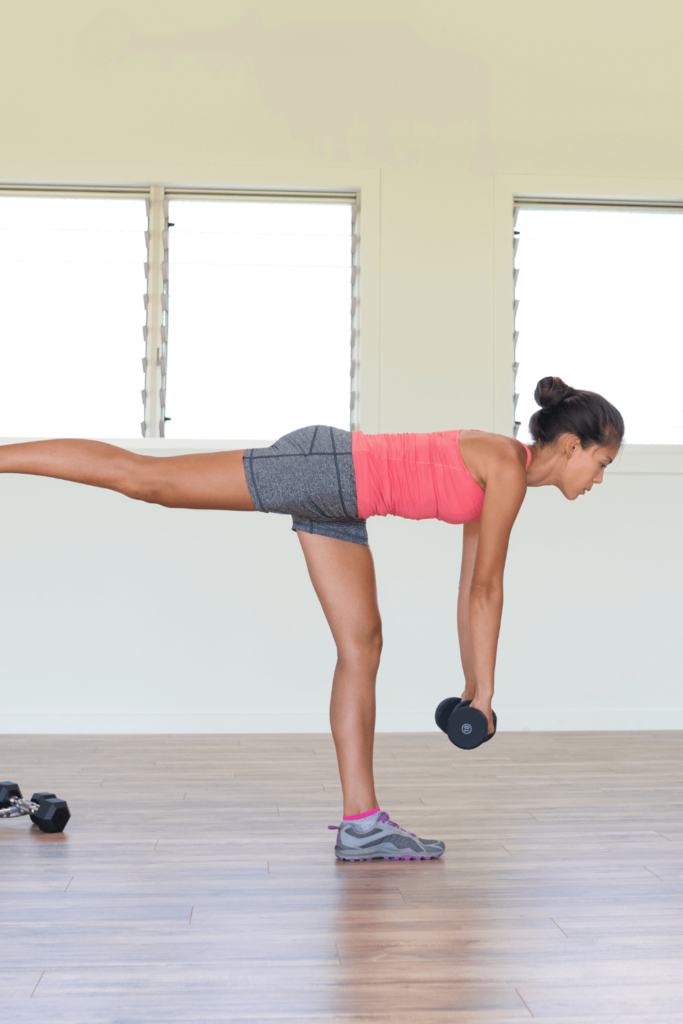Hello Runner Friend! Welcome to my blog. This post will discuss the Best Single Leg Exercises For Runners. Whether you are just starting to run or are a bit more advanced, these exercises will help build a stronger foundation, where you can live pain and injury-free.

When I was younger, I stopped running for years due to pain while running. I spent a lot of money on Doctors, studies and medicine. However, as soon as I started running again, my knees started hurting. I remember a Doctor told me to just “stop running” and that that would solve the problem. I was appalled that the person who was supposed to help me was giving up on me. Eventually, I just quit running.
Ten years later I read a book that gave me hope. I started running and working out, and ever since I have felt great. No more knee pain.
What is resistance training and why do we need to do it as runners?
Engaging in resistance training is paramount for achieving comprehensive health and fitness goals. Unlike cardio-focused exercises, resistance training, such as weights, resistance bands, or even body weight, offers unique benefits that extend beyond cardiovascular improvements.

One of the primary advantages is the promotion of muscle strength and endurance. Resistance training targets specific muscle groups, leading to increased muscle mass and enhanced overall strength. This is instrumental not only in achieving a toned physique but also in improving functional abilities in daily activities
For runners, incorporating resistance training into their regimen is a game-changer, providing a multitude of benefits that go beyond simply logging miles. One key advantage is injury prevention. Running can place repetitive stress on certain muscles and joints, leading to imbalances and overuse injuries. Resistance training helps address these imbalances by strengthening supporting muscles, reducing the risk of injuries, and promoting overall durability.
Building muscular strength also plays a pivotal role in fatigue resistance. As runners engage in longer distances, the fatigue resistance gained through resistance training becomes a valuable asset. It enables runners to maintain proper form and pace even during the latter stages of a run.
Beyond the physical benefits, resistance training for runners contributes to mental resilience. The discipline and focus required in strength training can carry over to the mental fortitude needed during challenging runs, enhancing overall mental toughness. In essence, incorporating resistance training complements running, creating a well-rounded approach that optimizes performance, reduces injury risks, and fosters both physical and mental strength.
Why do we need to train a Single leg at a time?
Muscular imbalance refers to a condition where there is an unequal distribution of strength, flexibility, or muscle development between opposing muscle groups or different areas of the body. In a balanced state, the muscles on either side of a joint or those surrounding specific body parts work together harmoniously.

However, when there is a muscular imbalance, one set of muscles may be stronger or tighter than its counterpart, leading to asymmetry and potential issues.
Several factors contribute to muscular imbalances, including:
- Repetitive Movements: Engaging in repetitive motions or activities that predominantly target specific muscle groups can lead to overuse and imbalances.
- Poor Posture: Maintaining poor posture over time can contribute to imbalances, as certain muscles may become overactive while others become underactive.
- Injury: Following an injury, there is often a natural tendency for the body to compensate by relying more on certain muscles, potentially creating imbalances during the recovery process.
- Lifestyle Factors: Sedentary lifestyles or occupations that involve prolonged periods of sitting can contribute to weakened muscles and imbalances.
Muscular imbalances can result in various issues, including decreased joint stability, increased risk of injury, altered movement patterns, and reduced overall athletic performance.
Addressing muscular imbalances often involves targeted strength training exercises, stretching, and corrective movements to restore balance and symmetry to the musculoskeletal system.
Regular assessment and preventive measures are essential for maintaining optimal muscle balance and overall functional fitness.
Best 2 Single-Leg Exercises For Runners
1. ATG Squat
This exercise is a game changer. After you incorporate the ATG squat into your routine, you will become a stronger athlete overall.
This guy is better known as the “Knee over-toes guy”. He is so knowledgeable, and has so many other exercises you should incorporate into your routine.
2. Bulgarian Split Squat
Jeff is one of the best trainers in the world. You better start watching his videos. The only downside is that there are hundreds of them.
Conclusion
Single-leg exercises offer numerous benefits for runners, making them an invaluable addition to any training regimen. By isolating each leg individually, these exercises help identify and address muscular imbalances, promoting symmetrical strength and stability essential for efficient running mechanics.

Moreover, single-leg exercises improve balance and proprioception, crucial elements for maintaining proper form and reducing the risk of falls or missteps, especially on uneven terrain. This heightened sense of body awareness translates into smoother, more controlled movements while running, ultimately improving overall performance.
Additionally, single-leg exercises engage smaller stabilizing muscles that may be neglected in traditional bilateral exercises, promoting a more comprehensive strengthening approach. They also help build functional strength, mimicking the demands placed on the body during running, thus directly translating to improved running performance.
Overall, integrating single-leg exercises into a runner’s training routine fosters a well-rounded approach to strength, stability, and injury prevention, ultimately contributing to enhanced running efficiency, endurance, and overall athletic success.




Leave a Reply